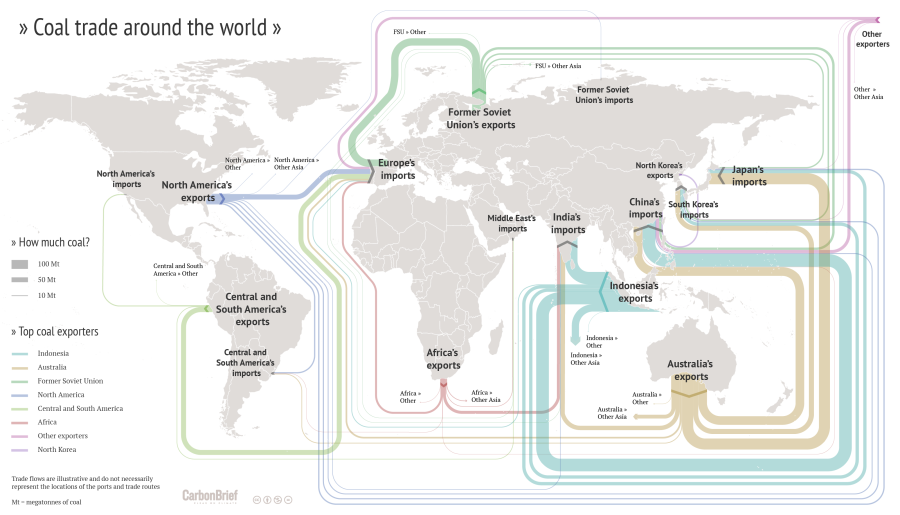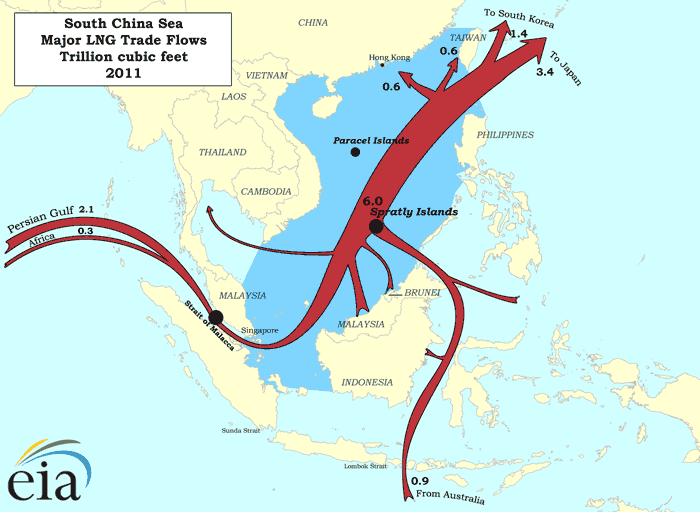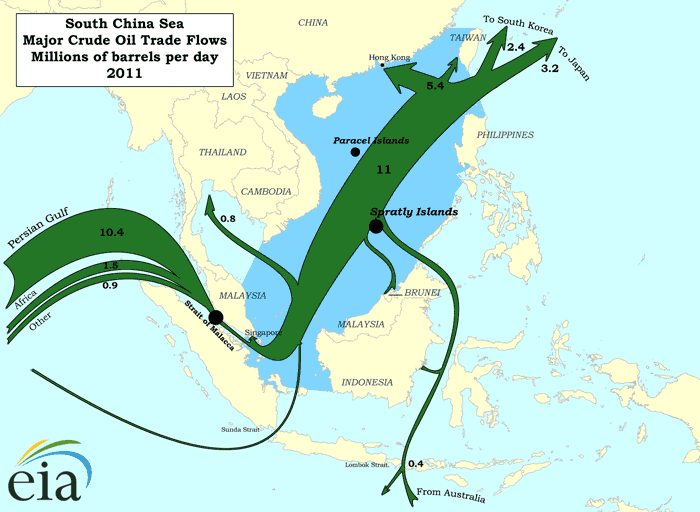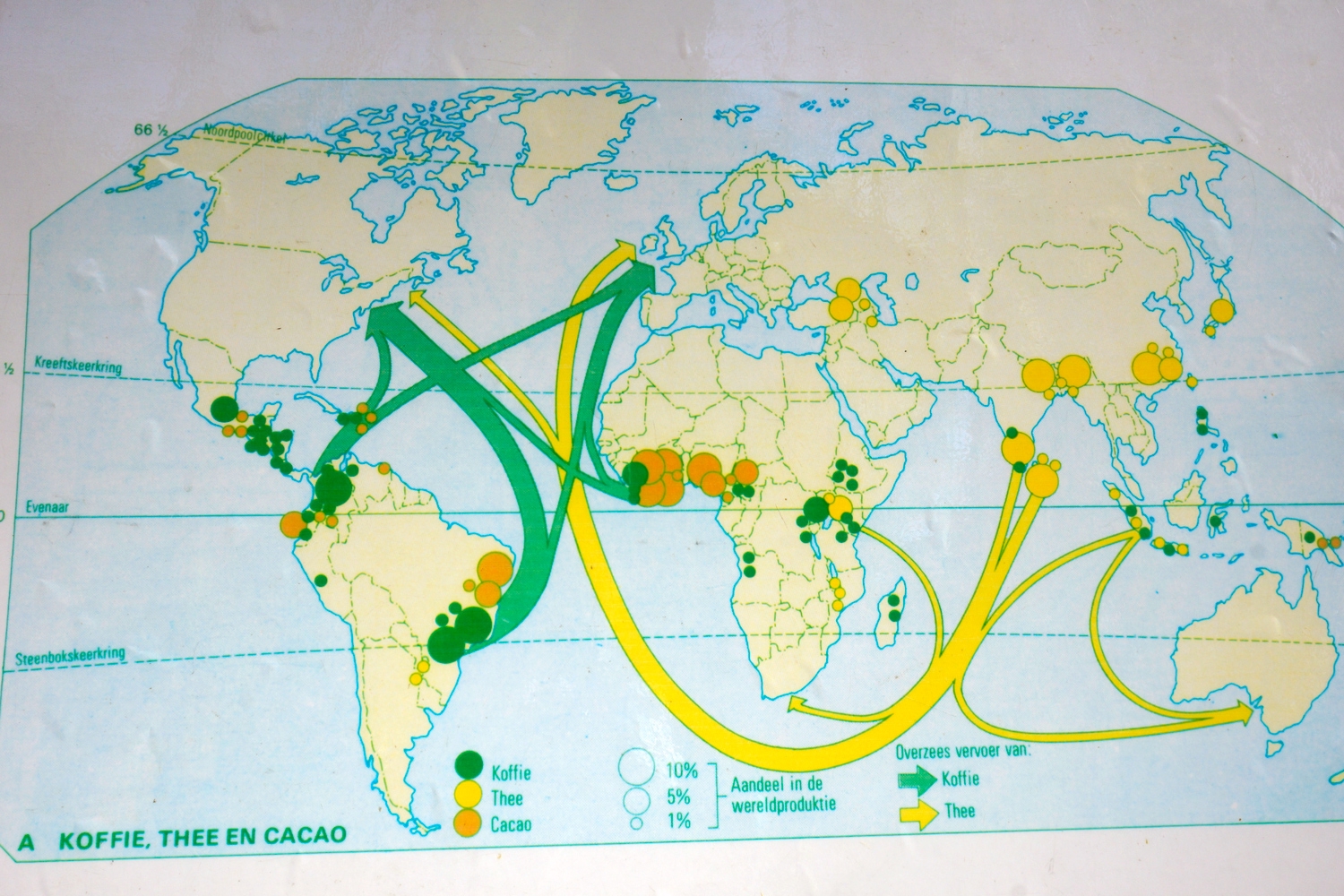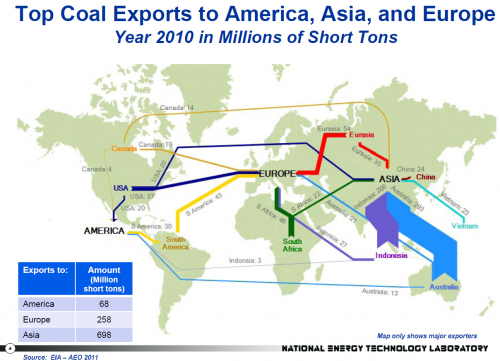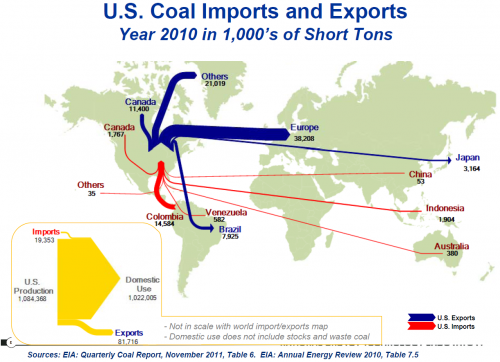Another Figure from OECD/IEA World Energy Outlook 2014 report showing energy exports/imports from/to five African subregions.
Coal measured in million tonnes of oil equivalents (mtoe), oil itself shonw in millions of marrels per day (mb/d). Natural gas measured in “bcm” (anyone?).
Given the different units for the flows I think only arrows of the same color should be compared). So not really a Sankey diagram…
